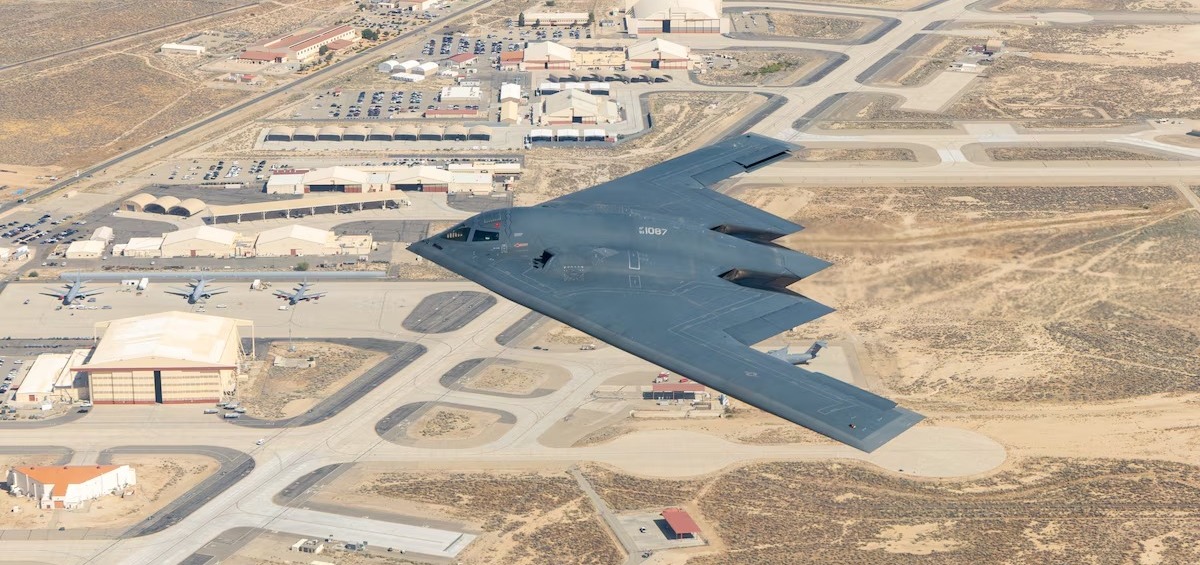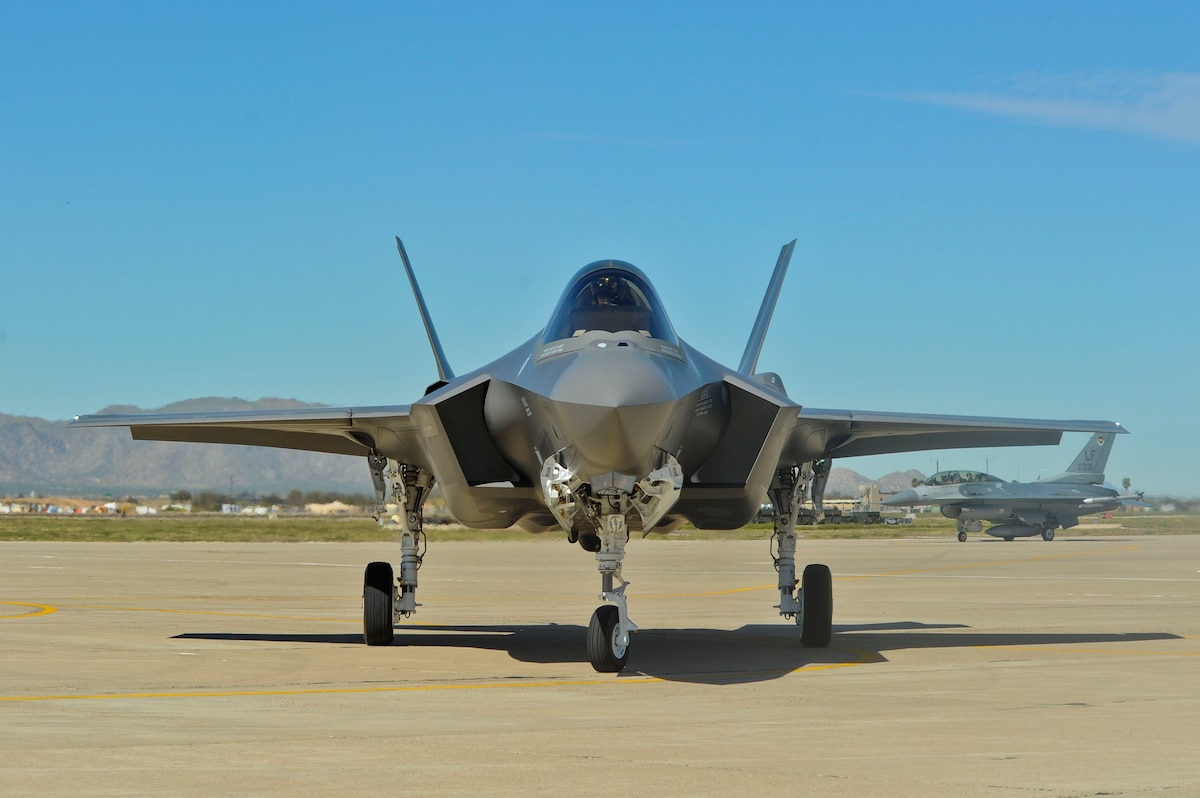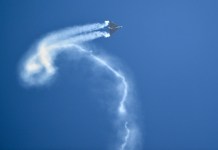The Fourth of July, known as American Independence Day, was celebrated this year with a flyover by the B-2 Spirit stealth bomber over the White House, accompanied by America’s cutting-edge fifth-generation stealth fighters.
US President Donald Trump, along with First Lady Melania Trump, watched from the balcony as the B-2 bombers from Whiteman Air Force Base, Missouri, were escorted by F-22 Raptors and F-35 Lightning II fighters.
The official X handle of the President of the United States (POTUS) posted the video.
The Fourth of July is celebrated to commemorate the day the United States declared its independence from British rule on July 4, 1776. While celebrations typically include fireworks, parades, and barbecues, the B-2 flyover was one of the biggest highlights. The other, and perhaps the most important highlight, was the “big, beautiful bill.”
Ahead of the Independence Day outdoor events, US President Donald Trump signed into law a massive package of tax and spending cuts at the White House. The bill reportedly seeks to make the 2017 tax cuts permanent and finance Trump’s ongoing immigration crackdown, among other things.
According to the reports, the outdoor event and the flyover also honoured the B-2’s role in the recent strikes conducted on Iran’s nuclear facilities under ‘Operation Midnight Hammer’, using the B-2 stealth bomber.
POTUS. FLOTUS. B-2 BOMBER. 🇺🇸🦅
MAKE AMERICA GREAT AGAIN! pic.twitter.com/9HAFMdZrhe
— The White House (@WhiteHouse) July 4, 2025
The trio represents the pinnacle of stealth air power in the United States, and incidentally, the three aircraft have remained in the headlines after the US Department of Defense (DoD) unveiled its budget for fiscal year 2026 in June 2025.
The B-2s Are Celebrated
Though the B-2 has been in the US Air Force service since 1997, it has remained in the headlines consistently since it bombed Iran.
When Israel struggled to decisively destroy Iranian nuclear facilities and obliterate its nuclear program during the ’12-day conflict’, it turned to the United States. Reluctant at first, the US Air Force (USAF) eventually launched ‘Operation Midnight Hammer’ on June 21 (June 22 Iranian time) with the B-2 Spirit.
To fool-proof the mission, two groups of B-2 Spirit Bombers took off from the Whiteman Air Force Base in Missouri. In the first group, an unknown number of B-2s flew west over the Pacific Ocean, supposedly headed toward the strategic airbase in Guam, creating a ruse, while another group of seven B-2s flew east to bomb Iranian nuclear sites, as previously explained in detail by the EurAsian Times.
The second group of bombers dispatched to West Asia entered Iranian airspace from the west or southwest, traveling across the Atlantic and Mediterranean Seas. The mission, which lasted over 36 hours, was the longest the USAF aircraft has conducted since 2001.
The bombers passed through airspace that is generally monitored by Russians using two different kinds of radar systems: Voronezh early warning radars and Container over-the-horizon (OTH) radars, which, in theory, are capable of identifying stealth aircraft.
The bombers likely deceived the Russian radars as they flew to their designated targets.

By the next morning, news broke that the US had bombed Iranian nuclear sites using the B-2 Spirits. The bombers dropped the heavy bunker-buster GBU-57 Massive Ordnance Penetrator (MOP) on the chosen Iranian sites without any resistance. Following the bombardment, all the bombers returned to base without being intercepted by the Iranians.
The B-2, along with the B-1 Lancer and the B-52 Stratofortress, forms the backbone of the US strategic bomber fleet. Designed for covert nuclear and conventional strikes, it has expanded its mission to include traditional precision attacks.
The B-2’s low-observable design, with its flying-wing shape and radar-absorbent materials, minimizes its radar cross-section, making it nearly undetectable by most air defense systems.
This stealth capability allows it to penetrate heavily defended airspace, a feature still unmatched by many modern aircraft flying globally.
With a range of over 6,000 nautical miles (extendable with aerial refueling), the B-2 can conduct global missions without forward basing, a critical advantage in contested regions. The bomber is expected to be replaced by the next-generation B-21 Raider, but the latest mission demonstrated that it is still very much a force to be reckoned with.
Earlier, the White House Press Secretary Karoline Leavitt announced that President Trump had invited the pilots who flew in the mission to bomb Iranian nuclear sites to visit the White House on July 4.
The F-35 Are Always The Talk Of The Town
The F-35’s presence in the flyover, along with the B-2 and the Raptor, emphasized its status as a cornerstone of the USAF, with over 1,000 units delivered by 2025. The stealth and advanced avionics of the F-35 make it a fitting complement to the B-2 bomber.
The B-2’s stealth design allows it to penetrate heavily defended airspace undetected, a capability that is ideal for the strategic bombing of high-value targets. The bomber would be complemented by the advanced stealth of the F-35 in contested environments, with the latter operating as an escort or on a SEAD (Suppression of Enemy Air Defense) mission.
The relatively smaller size of the F-35 and its agility would allow it to engage threats that the B-2 would likely try to avoid. Together, they would create a stealthy force package, with the B-2 delivering heavy payloads and the F-35 clearing paths, gathering intelligence, and enhancing mission survivability in combat.
Notably, though, the F-35’s participation in the flyover came against the backdrop of the Pentagon slashing the F-35 orders for the FY26 budget request. The USAF is now requesting only 24 F-35As, which is the program’s minimum sustaining rate, instead of the previously planned 48. The decision has reportedly been made to prioritize the development and production of the next-generation F-47 aircraft.

The F-35 is the one American aircraft that is rarely away from the spotlight — be it Israel’s extensive (and successful) use of F-35I Adirs in its war with Iran or Turkey’s relentless pursuit of obtaining the aircraft from Washington.
While the numbers are being slashed, the aircraft’s capability is now expected to expand with the ‘Ferrari’ upgrade.
In April of this year, the manufacturer Lockheed Martin announced plans to create an upgraded “fifth-generation plus” version of the iconic stealth fighter, utilizing the sixth-generation technology it is developing for the Next Generation Air Dominance (NGAD) program.
On the other hand, the aircraft has been publicly criticized by critics, including US billionaire and former Trump confidant Elon Musk, who spoke about the diminished utility of manned aircraft at a time when unmanned systems and Artificial Intelligence (AI) in combat are proliferating.
The Formidable F-22 Raptors
The F-22 Raptor is a premier air superiority fighter with unmatched maneuverability and stealth. Its participation in the flyovers highlights the importance accorded to it by the USAF, despite its production ending in 2011.
The F-22 is the first fifth-generation stealth aircraft in the world and is expected to be replaced by the F-47.
With its advanced stealth, supercruise, and thrust vectoring, the Raptor is designed for air superiority and can operate in contested environments where radar and missile threats are prevalent. In a hypothetical combat scenario, the F-22 can escort the B-2, neutralizing enemy fighters and air defenses that could threaten the bomber’s mission.
Thus, ensuring that the B-2 can deliver its payload without engaging in direct combat, leveraging the F-22’s stealth to maintain a low-profile strike package.
The F-22 can relay real-time threat data to the B-2, improving its situational awareness in dynamic environments. Though not as network-centric as the F-35, the Raptor’s sensors could enhance the B-2’s ability to navigate contested airspace. Additionally, the combined stealth profiles of these cutting-edge make them a formidable, nearly undetectable force.

Despite their age, the USAF is determined to keep them in the air for another decade.
The FY26 budget requests $90.34 million in funding for the upgrade of the F-22 Raptor. The aircraft will receive several new “viability” modifications to help shield them from emerging threats and ensure their continued relevance.
The package includes an upgrade to the jet’s electronic warfare suite, radar capabilities, stealth characteristics, and the previously reported Infrared Defensive System (IRDS). This is in addition to other upgrades, such as stealthy drop tanks that expand their range and podded infrared search and track (IRST) sensors.
Additionally, reports indicate that the Raptors will be the first operational airborne controllers of the USAF’s future Collaborative Combat Aircraft (CCA) drones. Beginning in the next fiscal year, the service plans to equip the F-22s with tablet-based control systems and implement other relevant changes.
- Contact the author at sakshi.tiwari9555 (at) gmail.com
- Follow EurAsian Times on Google News




